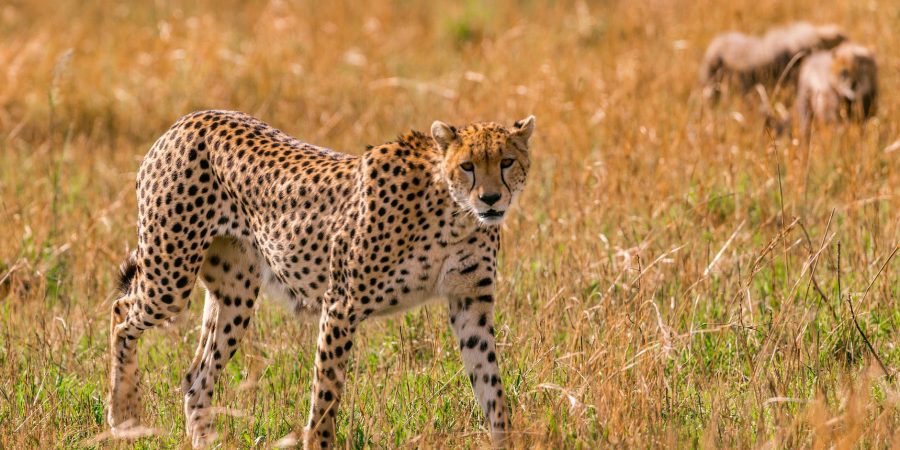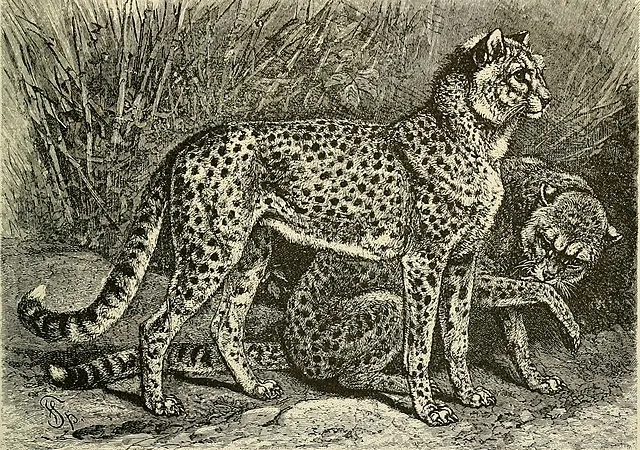The vernacular name “Cheetah” is derived from Hindustani Urdu spoken in Northern India and Pakistan. This, in turn, comes from Sanskrit: चित्रय (Chitra-ya) or Chitrakah meaning ‘variegated’, ‘adorned’ or ‘painted’ or `distinctively marked’; basically the irregular spots or drawings on the fur of the cheetahs.
Early taxonomists initially categorized the cheetah as Felis jubatus, but quickly realized that it was distinct from all other cats and put it under the mono-specific genus Acinonyx Brooks (1828), of which there is only the one species jubatus.
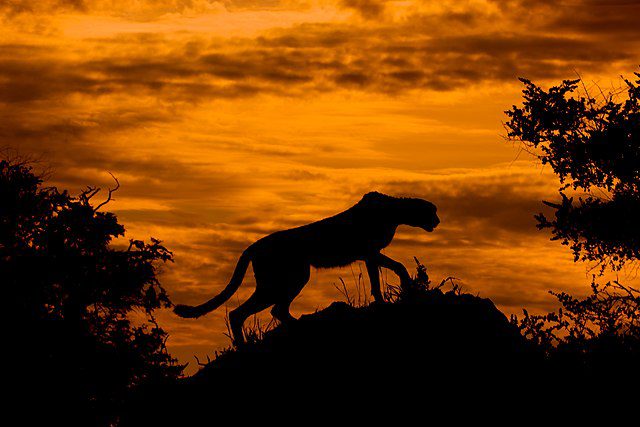
The cheetah’s appearance is also related to its scientific name, Acinonyx jubatus. The Greek word for acinonyx means “semi-retractable” (onyx or onus, means a claw ) and the Latin word for “jubatus” means “crested” because of the cheetah’s mane, or long hair on the neck of the young ones.
Cheetahs have held a significant place in the history of mankind. (History of Cheetah is another interesting story we have shared in another blog post.)
These elusive cats have two black lines that run from their eyes down to the mouth like tear-streaks and are painted black on the back of their small, rounded ears. On their light fur, cheetahs have approximately 2,000 black spots, and each one has a distinctive pattern that distinguishes it from other cheetahs.
With the exception of the rainforest of Central and Western Africa, the Arabian Peninsula, Pakistan, India, and the southern areas of Russia; cheetahs were once common from the Cape of Good Hope to the Mediterranean.
Cheetahs became extinct in India and Russia by 1952 and 1989, respectively. Cheetahs are believed to be extinct in the Western Sahara, Ghana, Djibouti, and Nigeria. The two largest cheetah populations are found in the Serengeti in East Africa and Namibia and Botswana in Southern Africa.
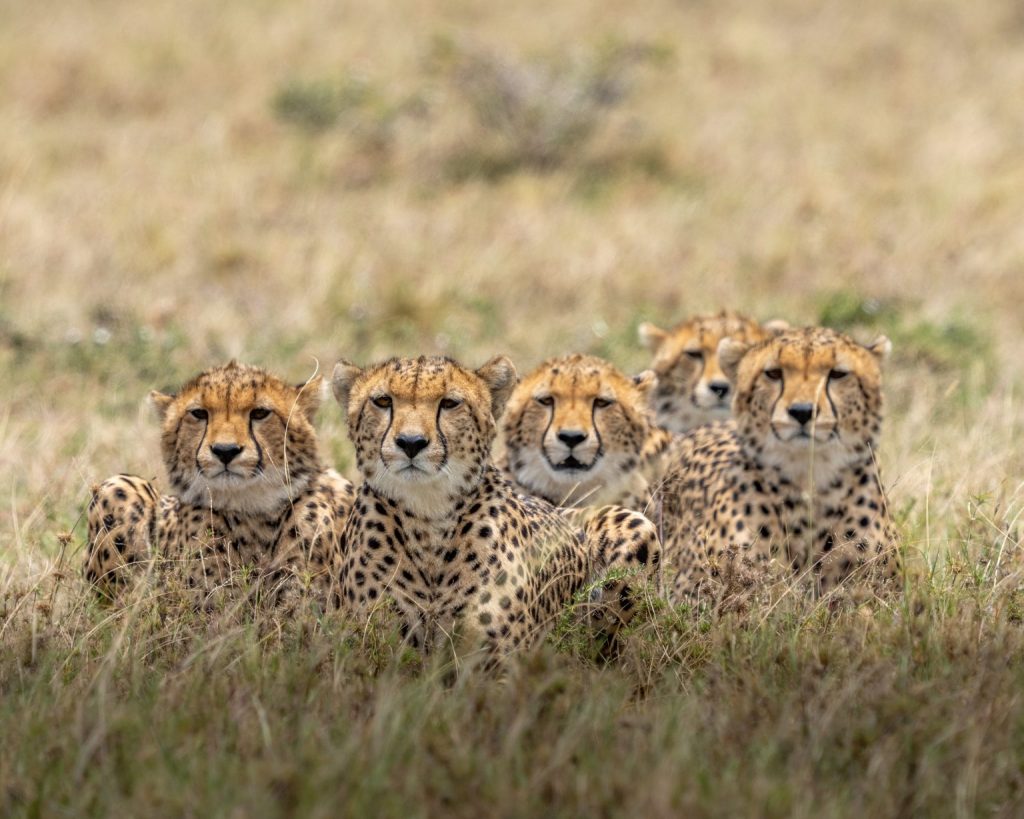
While seven sub-species have been found, most taxonomists only accept five of them as legitimate. They include:
- The Asiatic Cheetah (Acinonyx jubatus venaticus)
- The North West African Cheetah or Saharan Cheetah (Acinonyx jubatus hecki)
- The Northeast African cheetah (Acinonyx jubatus soemmeringii)
- The East African cheetah (Acinonyx jubatus raineyii)
- The Southeast African cheetah (Acinonyx jubatus jubatus)
The Asiatic Cheetah (Acinonyx jubatus venaticus)
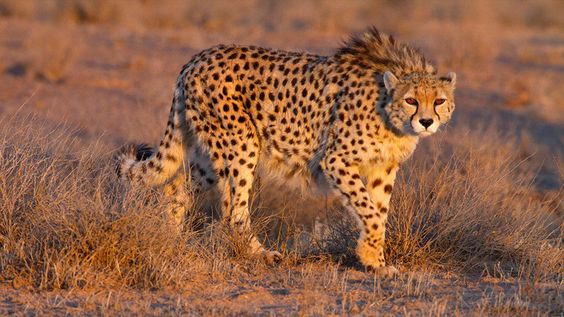
The Asiatic Cheetah, Acinonyx jubatus venaticus formerly prowled the grasslands of India, Pakistan, Russia, Iran, and the Middle East; but now they are only found in Iran. The number of remaining wild Asiatic Cheetahs in Iran is currently estimated to be less than 15 individuals, and they are exclusively found on the isolated and dry central plateau.
The cheetah is revered in Iran as a significant piece of its natural and cultural legacy, and it has come to represent the nation’s conservation efforts. The Wildlife Conservation Society and the United Nations Development Program joined forces with Iran’s Department of the Environment (DOE) to form a comprehensive conservation campaign.
The Iranian Department of Environment estimates that Iran only has 12 Asiatic cheetahs, 9 males and 3 females, left by January 2022.
African Cheetah
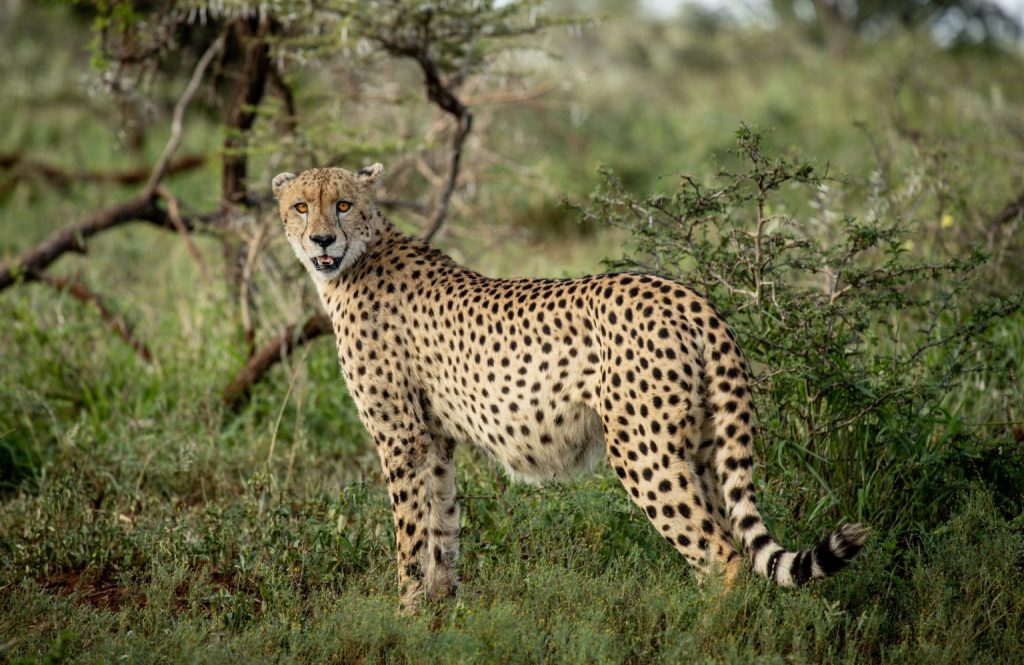
1. The Saharan cheetah, also known as the Northwest African cheetah is a subspecies of the cheetah that lives in the Sahara and the Sahel. The IUCN Red List classifies the Saharan cheetah (Acinonyx jubatus hecki) which was historically widely spread over north-western Africa, as Critically Endangered. It currently only occurs in 9% of its former habitat. Approximately 400 individuals might be surviving in the wild.
2. The Northeast African cheetah North-East Africa is the home of the cheetah subspecies known as The Northeast African cheetah (Acinonyx jubatus soemmeringii). South Sudan and Ethiopia both have contemporary records, but Eritrea, Djibouti, Somalia, and Sudan population is unknown. Approximately 900 individuals might be surviving in the wild.
3. The East African cheetah: East Africa is home to a population of cheetahs known as The East African cheetah (Acinonyx jubatus raineyii). It is found in the savannah and grasslands of Somalia, Tanzania, Kenya, and Uganda. The Serengeti habitat, which includes Maasai Mara, and the Tsavo region, are primarily home to cheetahs.
The East African cheetah was formerly common throughout East Africa, but it has since lost a significant portion of its habitat and is now extinct in three nations: the eastern Democratic Republic of the Congo (North and South Kivu provinces), Rwanda, and Burundi. Approximately 1000 individuals might be surviving in the wild.
4. The Southeast African cheetah: The cheetah subspecies that is most commonly found in East and Southern Africa is The Southeast African cheetah (Acinonyx jubatus jubatus). The Southern African cheetah primarily inhabits the grasslands of the Transvaal region in South Africa, the savannahs of the Okavango Delta, and the lowland deserts of the Kalahari.
This cheetah favour a variety of habitats in South Africa, including forests (such as those in Kruger National Park), shrub-lands, high highlands, hilly grasslands, and montane regions, where suitable prey is typically available. Approximately 1200 individuals might be surviving in the wild in South Africa.
Description and Morphology of Cheetahs
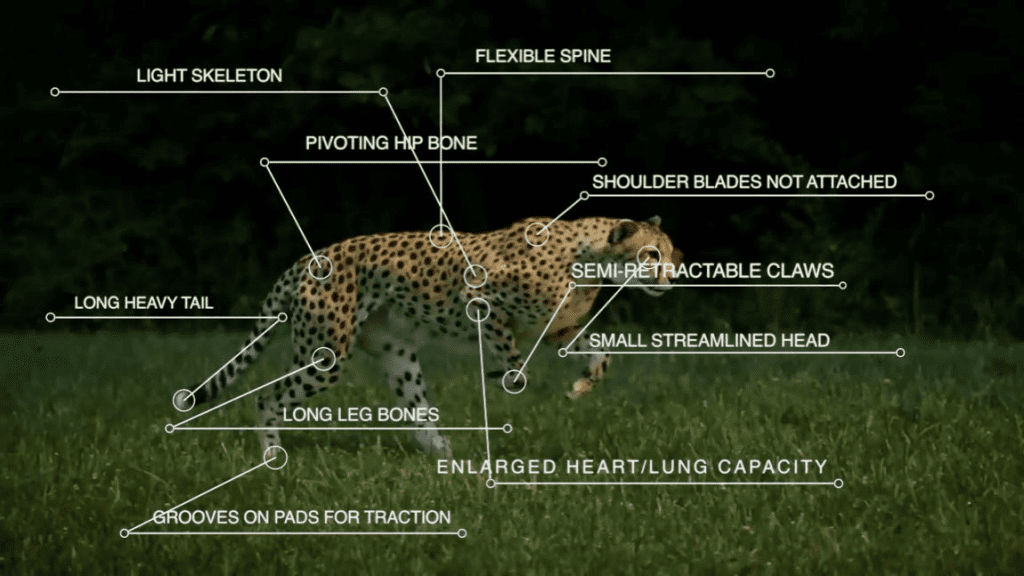
The 39 other species of Felidae (that include leopard, tiger, lion, etc.) are very different from the cheetah in terms of both morphology and behaviour.
In contrast to the bulkier bodies of the majority of other cat species, cheetahs are light in proportion to size and have comparatively long legs. It’s physique is more like the canids (dog family), than the cat family. Cheetahs weigh an average of 45 kg for females and 65 kg for males as adults.
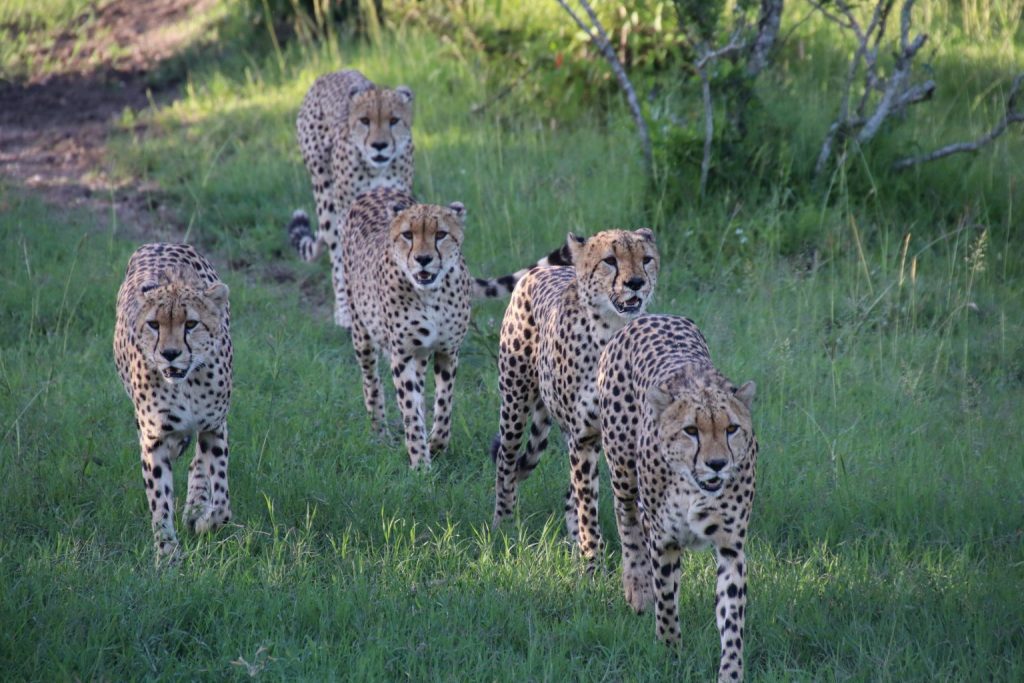
Cheetah The Fastest Land Mammal
It can chase prey at the fastest speed of any land mammal, up to 100km/hour, because to its aerodynamic structure. The cheetah can sprint at 100 km/hr in a matter of seconds while covering 7-8 meters in a stride and only putting one foot in contact with the ground at once.
The cheetah has evolved for speed through a variety of adaptations, including having a strong heart, a huge liver, and thick, sturdy arteries. It features a small head, flat face, shorter muzzle length, large eyes placed for best binocular vision, expanded nostrils, and numerous air-filled passages.
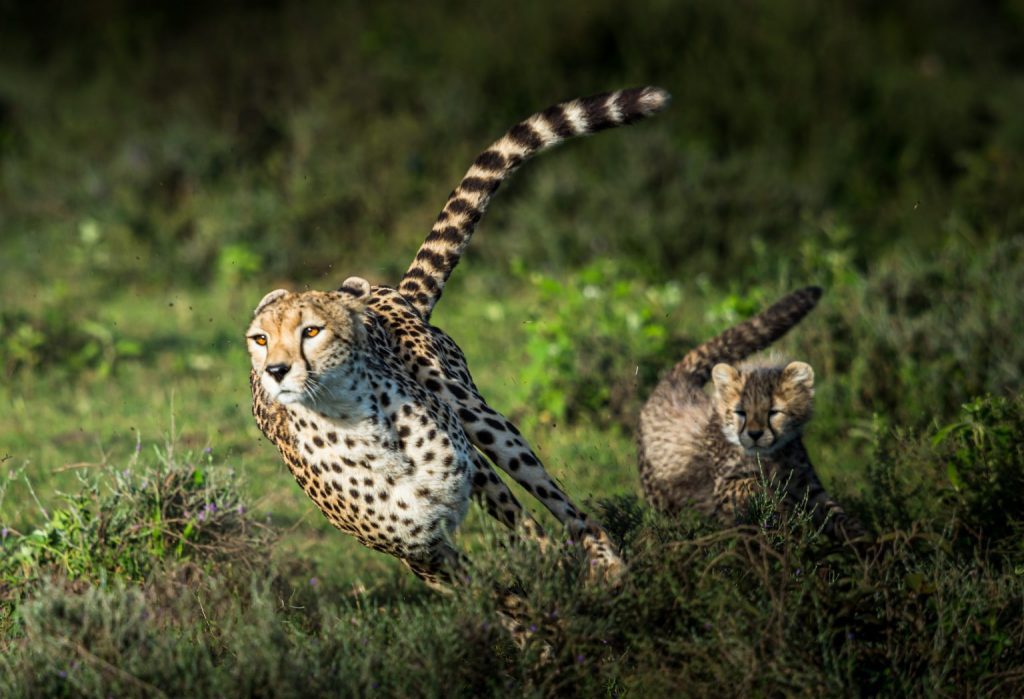
It has a long, lean body with long, slender feet and legs, as well as specific muscles that function concurrently for fast acceleration and increased limb swing. When running, the limbs are alternately bunched up and then extended, increasing the reach of the legs. This allows the hip and shoulder girdles, which swivel on a flexible spine that curves up and down, to do this.
During a high-speed chase, the cheetah’s muscular, long tail serves as a stabiliser or rudder for balance, counteracting its body weight. This keeps it from rolling over and spinning out in quick turns.
The only cat with short, blunt, semi-retractable claws that serve as cleats for traction while running is the cheetah. In order to assist them in quick, sharp turns, their paw pads are hard and less rounded than those of the other cats.
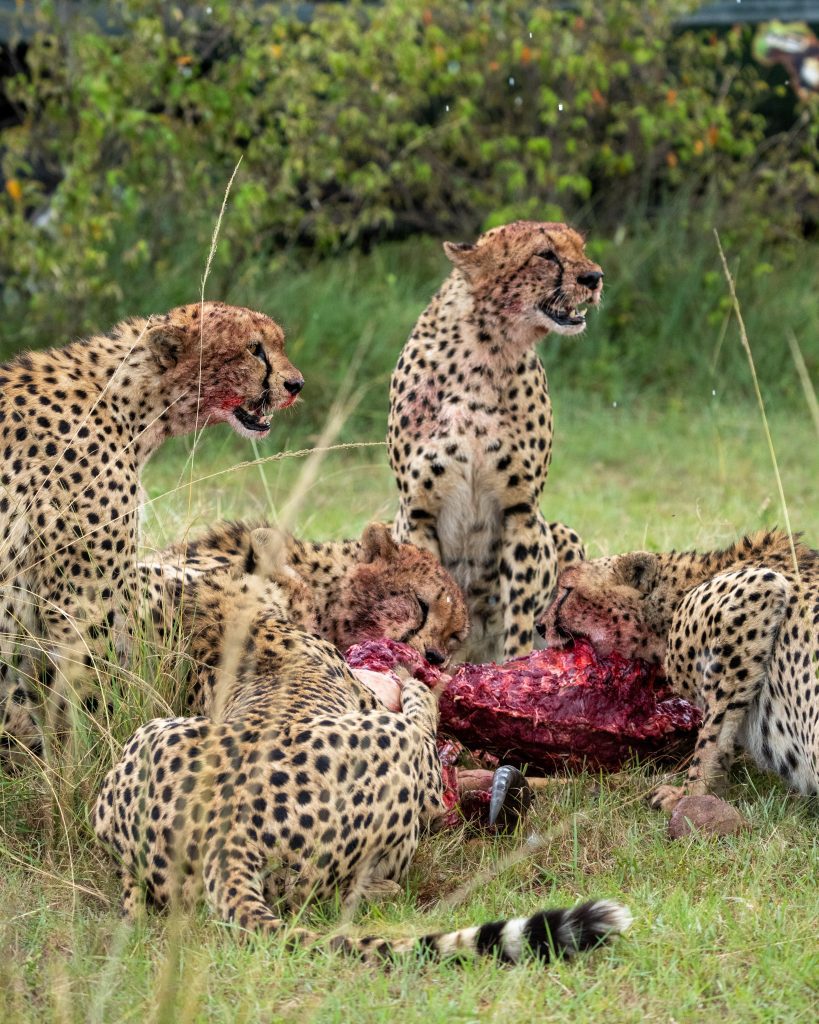
Habits and Habitats of Cheetahs
Cheetahs inhabit habitats that mostly include dry, open country, and grasslands, as well as denser forests and rocky terrains.
Unlike most carnivores, cheetahs are mostly diurnal – hunting in the early mornings and late afternoons, and active primarily during the day. A cheetah eats a variety of small animals, including birds, rabbits, small antelopes, young warthogs, gazelles, rats.
They make sure to consume their hunt quickly, so that they don’t lose it to competitors like leopards, lions, hyenas and jackals etc.
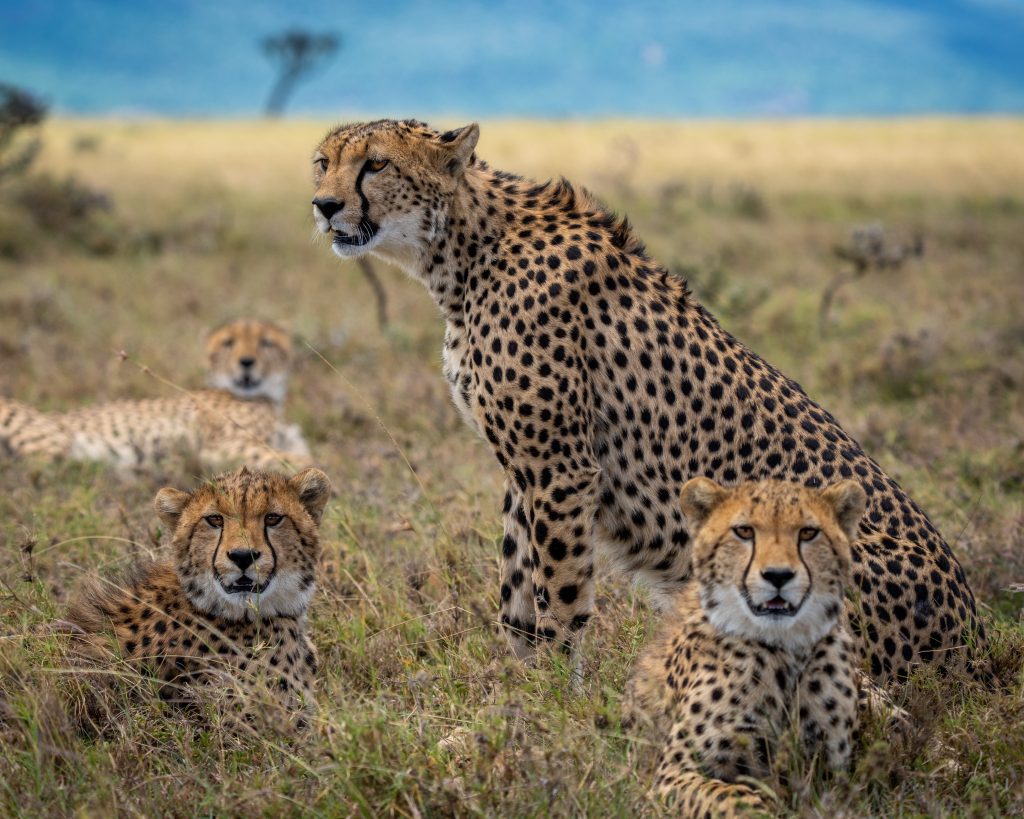
Cheetahs are the only wild cats, other than lions, that live in groups. Group of cheetahs are known as “coalitions” and usually include two or three males that are often brothers. Female cheetahs that have cubs are solitary.
The adult male and female cheetahs meet only to mate. Male coalitions mostly live and hunt together for life and occupy an area that may overlap the range of several adult females. Females home in a generally much larger areas than those of male coalitions.
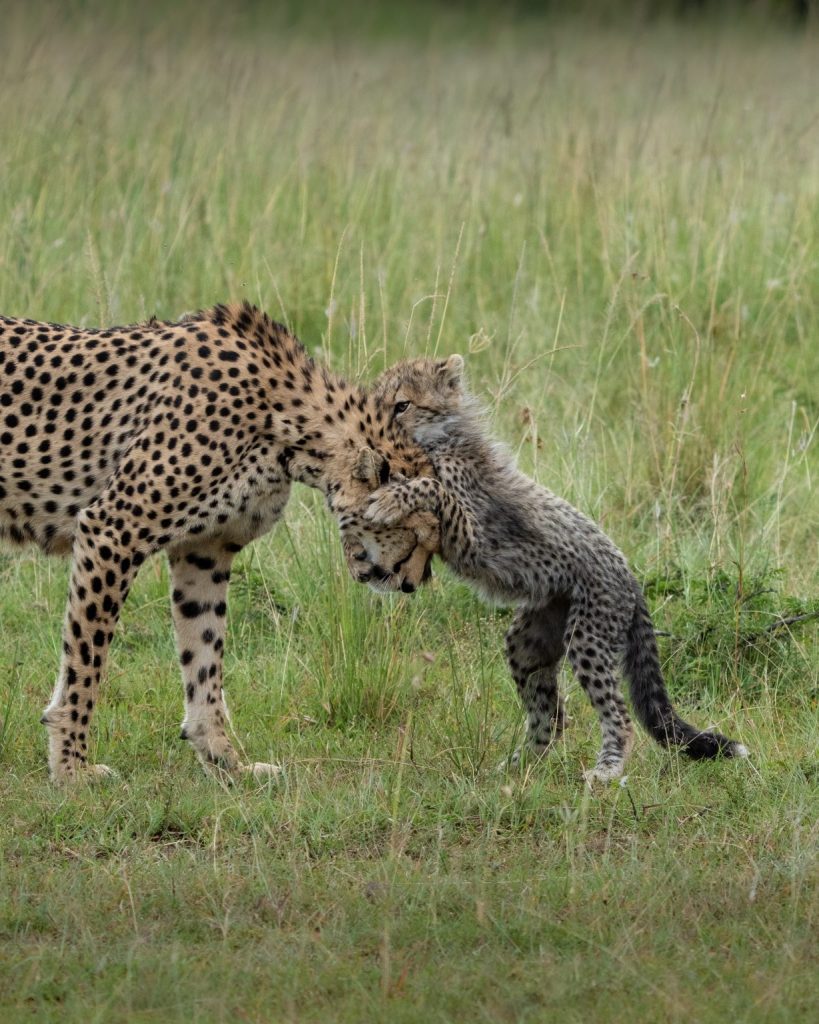
Cheetah Cubs
The gestation period for cheetahs is about three months and the female give birth to 2-8 cubs mostly in a hidden cover of tall grasses and thick vegetation. The cubs weigh close to 300 grams at birth, and their fur is dark and they sport a thick yellow-gray mane along the back.
This adaptation aids in camouflage and protects them from extreme weather conditions, in their early months.
The cubs tend to be at high risk of being predated upon, and mortality rate can be as high as 90%. Sub-adults by the time they are 16-24 months separate from the mother. Then they go on to establish their territories, often travelling huge distances as the young males tend to be chased away by resident male coalitions.
Whereas, the females establish their territory in the same area as their mother.
Cheetahs are ready to mate once they are two and a half to three years old.
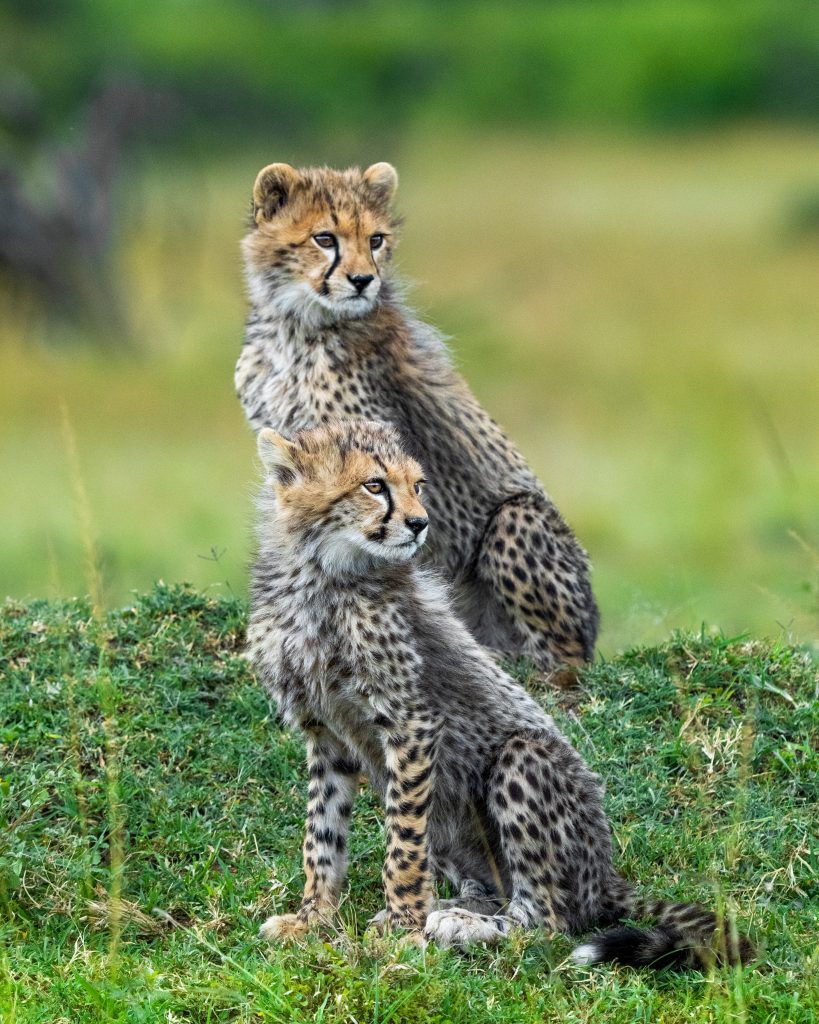
Vocalisations
#DidYouKnow: Cheetahs are the only big cats that can’t roar.
Unlike other big cats, like lions, tigers, leopards etc. cheetahs don’t roar. They growl when facing danger, else they tend to vocalise with sounds more equivalent to a high-pitched chirps or bubble. They bark when communicating with each other. The cheetah also purrs, meows and hisses. Here’s one such video depicting the same:
Average Lifespan of a Cheetah
In the wild, a cheetah lives between ten to twelve years. Biologists note that females tend to live longer than males.
The lifespan of a male cheetah can drop to an average of eight years with territorial conflicts between coalition of males.
Cheetahs living in captivity live longer and may have an average lifespan of 15 and 20 years approximately.
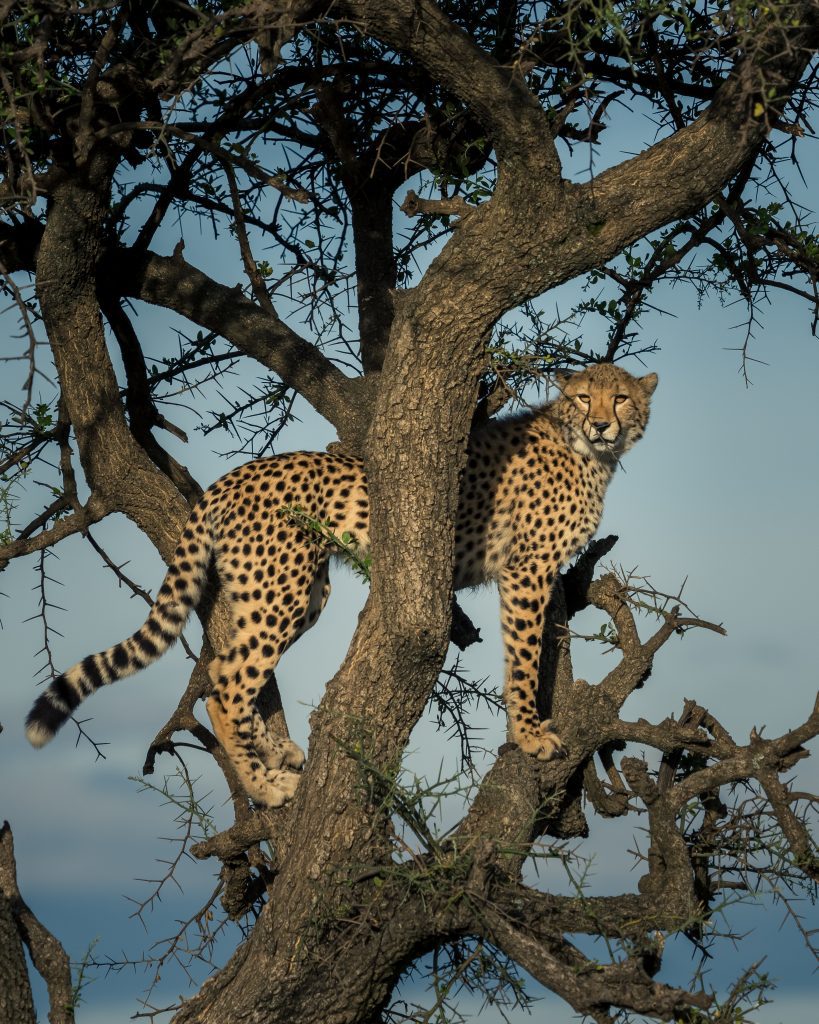
Cheetahs are regal mammals and apex predators that have a valuable role to play in our ecosystem. African Cheetahs are listed as Vulnerable by the IUCN Red List of threatened species. Asiatic Cheetahs are Critically Endangered species, currently surviving only in Iran.
Efforts are being made to help revive their population and one such example is introducing the African Cheetah in Kuno National park in India.
We hope mankind’s efforts to conserve this species comes to fruition, and the future generations get to witness a growth in the population of this regal, apex predator and the fastest living land animal.

Written by:
Gaurav Dhotre, Naturalist at Waghoba Eco-Lodge & Natasha Sinha, Content Curator
History of Cheetah
History of Cheetahs | Cheetahs in India

